Last updated: March 15, 2024
August 26, 2020 was Women’s Equality Day, a celebration of the centennial anniversary of the 1920 ratification of the Nineteenth Amendment to the Constitution that guarantees that, “The right of citizens of the United States to vote shall not be denied or abridged by the United States or by any State on account of sex.” This is part one of a four-part series, describing the many years of exhaustive effort channelled by American women into the suffrage movement that ultimately secured voting rights for women nationally.
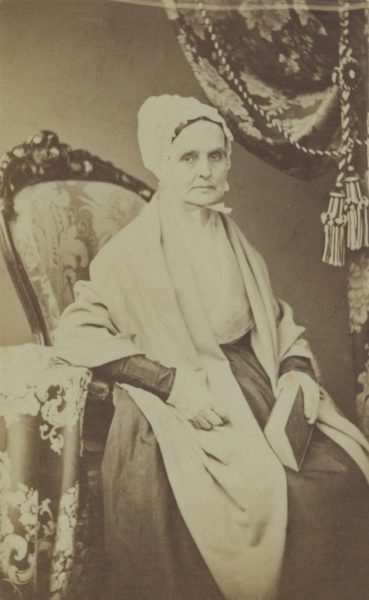 It is widely agreed that the milestone that best marks the beginning of the women’s movement in America can be traced to the 1848 Woman’s Rights Convention that was held at the Wesleyan Chapel in Seneca Falls, New York. Organized by Elizabeth Cady Stanton (1815-1902) and local Quaker women, the convention was timed so that Lucretia Mott (1793-1880,) a feminist and Quaker preacher from Philadelphia could attend as the featured speaker.
It is widely agreed that the milestone that best marks the beginning of the women’s movement in America can be traced to the 1848 Woman’s Rights Convention that was held at the Wesleyan Chapel in Seneca Falls, New York. Organized by Elizabeth Cady Stanton (1815-1902) and local Quaker women, the convention was timed so that Lucretia Mott (1793-1880,) a feminist and Quaker preacher from Philadelphia could attend as the featured speaker.
Many Seneca Falls participants were concurrently engaged in speaking up in abolitionist circles, where they honed their oratory skills and networked with progressive reformers. Mott and Stanton were abolitionists who first met at the 1840 World Anti-Slavery Convention in London. They were furious that they were not permitted to speak from the convention floor because they were women, so they decided to collaborate around the subject of women’s rights.
The 1848 Seneca Falls Convention pushed for equal rights for American women that included legal rights for married women, equal pay for equal work, and an end to the religious oppression of women. At the conclusion of the convention, 100 of the nearly 300 participants signed a resolution called the Declaration of Sentiments. The centerpiece of this document asserts that “all men and women are created equal.” There was a heated debate about whether to include a statement regarding voting rights for women. Many, including Mott, were not in favor of including the statement, but Frederick Douglass (circa 1818-1895,) the only African American in attendance, argued persuasively that it should be added. The suffrage resolution was approved, although it was the only resolution that did not pass unanimously. In the end, the document’s ninth clause states, “Resolved, That it is the duty of the women of this country to secure to themselves their sacred right to the elective franchise.”
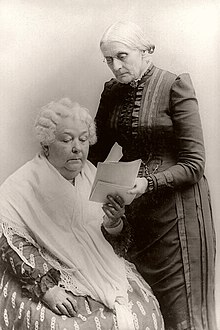 Susan B. Anthony (1820-1906) didn’t meet Stanton until 1851, but they quickly forged a formidable team. These two women had complementary skills and tirelessly worked together to advocate for women’s rights, continuously collaborating on suffrage for more than half a century. Stanton, who was raising several children at the time, wrote most of the speeches that Anthony traveled all over the country to give.
Susan B. Anthony (1820-1906) didn’t meet Stanton until 1851, but they quickly forged a formidable team. These two women had complementary skills and tirelessly worked together to advocate for women’s rights, continuously collaborating on suffrage for more than half a century. Stanton, who was raising several children at the time, wrote most of the speeches that Anthony traveled all over the country to give.
Also in 1851, a regional women’s rights convention in Ohio was disrupted by men who were in attendance. It was there that Sojourner Truth (circa. 1797-1883) delivered her famous “Ain’t I a Woman?” speech. Using wit and humor to her advantage, Truth spoke up directly to address opposition to suffrage rights for women.
Some of the most important work during this decade involved making it acceptable for women to speak out on the lecture circuit. Women like Lucy Stone (1818-1893) and Susan B. Anthony were persistent in speaking publicly, and eventually resistance to their efforts to speak out began to break down. Anthony later wrote, “No advanced step taken by women has been so bitterly contested as that of speaking in public. For nothing which they have attempted, not even to secure the suffrage, have they been so abused, condemned and antagonized.”
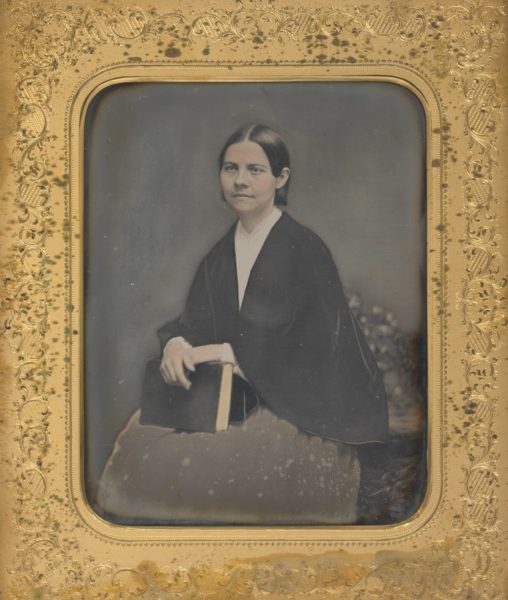 Protesting and lobbying for women’s suffrage was minimal and restrained, during the Civil War. However, once the war ended in 1865, the women put forward a Petition for Universal Suffrage, calling for a national constitutional amendment to “prohibit the several states from disenfranchising any of their citizens on the ground of sex.” This was the first national petition demanding women’s suffrage. In 1869, they followed up on the petition by creating the National Woman Suffrage Association (NWSA,) a movement focused on obtaining voting rights for women.
Protesting and lobbying for women’s suffrage was minimal and restrained, during the Civil War. However, once the war ended in 1865, the women put forward a Petition for Universal Suffrage, calling for a national constitutional amendment to “prohibit the several states from disenfranchising any of their citizens on the ground of sex.” This was the first national petition demanding women’s suffrage. In 1869, they followed up on the petition by creating the National Woman Suffrage Association (NWSA,) a movement focused on obtaining voting rights for women.
In that same year, a second organization, the American Woman Suffrage Association (AWSA,) was formed by Lucy Stone and other interested women, mostly from the New England area. The suffragists in these two organizations approached the issue of women’s inequality using different lenses, methods, and political strategies. The NWSA were independent politically, but the AWSA tried to build bridges with the Republican Party, hoping to gain leverage from the party’s advocacy for passage of the 15th Amendment. Another difference in the organizations was that the NWSA favored a national approach, while the AWSA focused more on working for equality on the local level.
Anthony traveled extensively by train across the nation, holding rallies in support of women’s suffrage, and giving as many as 75 to 100 speeches per year. She worked on state campaigns and even worked internationally for women’s rights, playing a key role in creating the International Council of Women.
In 1872, Susan B. Anthony and 14 other women in her local polling location voted illegally and were arrested. In a highly publicized trial, Anthony was found guilty, but she refused to pay the $100 fine. She and the other women were not sent to prison because that could have enabled them to file lawsuits to try to get the Supreme Court to rule that women had a constitutional right to vote. Legal proceedings that did reach the Supreme Court between 1873 and 1875 denied voting rights to women in connection with the 14th and 15th Amendments. So when it became obvious that this approach was not working, the women began the grueling federal campaign for an amendment to ![]() the U.S. Constitution to guarantee women the right to vote.
the U.S. Constitution to guarantee women the right to vote.
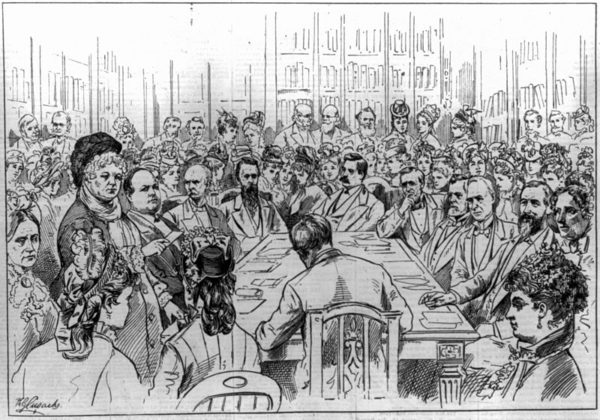 Getting approval for a constitutional amendment requires a 2/3 majority in both houses of Congress and ratification by the legislatures of 3/4 of the states (36 of the 48 states at the time.) The 19th Amendment was first introduced to Congress in 1878 by Aaron Sargent, a friend of Anthony’s, but failed to pass several times. This disappointment caused the NWSA to change course. Over time, they began to pursue enfranchisement for women at the local and state levels, similiar to the AWSA efforts.
Getting approval for a constitutional amendment requires a 2/3 majority in both houses of Congress and ratification by the legislatures of 3/4 of the states (36 of the 48 states at the time.) The 19th Amendment was first introduced to Congress in 1878 by Aaron Sargent, a friend of Anthony’s, but failed to pass several times. This disappointment caused the NWSA to change course. Over time, they began to pursue enfranchisement for women at the local and state levels, similiar to the AWSA efforts.
Still promoting women’s suffrage after years of rivalry and separate organizing efforts, the two women’s suffrage groups merged in 1890 to form the National American Woman Suffrage Association (NAWSA.) This movement to realign and consolidate was encouraged by Lucy Stone’s daughter, Alice Stone Blackwell (1857-1950.) Elizabeth Cady Stanton served as president until she retired in 1892 and was succeeded 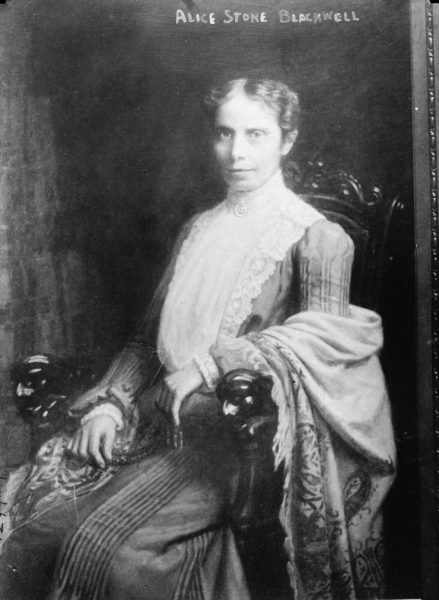 by Susan B. Anthony. At the 1890 NAWSA convention in Washington D.C that year, Carrie Chapman Catt (1859-1947,) a suffragist from Iowa, was one of the speakers. Ten years later, as the hand-picked successor to Anthony, she became NAWSA president and served in that capacity until 1904.
by Susan B. Anthony. At the 1890 NAWSA convention in Washington D.C that year, Carrie Chapman Catt (1859-1947,) a suffragist from Iowa, was one of the speakers. Ten years later, as the hand-picked successor to Anthony, she became NAWSA president and served in that capacity until 1904.
![]() The approach of the NAWSA at that time was focused on gaining suffrage for women on a local state-by-state effort. But by the turn of the century, women had only been granted voting rights in four western territories and states: Wyoming (1869,) Utah (1870,) Colorado (1893,) and Idaho (1896.)
The approach of the NAWSA at that time was focused on gaining suffrage for women on a local state-by-state effort. But by the turn of the century, women had only been granted voting rights in four western territories and states: Wyoming (1869,) Utah (1870,) Colorado (1893,) and Idaho (1896.)
Ultimately, a second surge movement of first wave feminism was initiated by women after the turn of the century. Shortly before her death in 1906, Susan B. Anthony, who had dedicated her entire life to the suffrage movement, declared “Failure is impossible!” and it rapidly became a mantra for the women’s 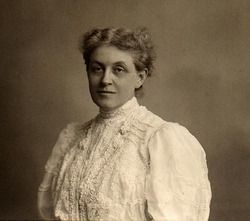 movement in the early twentieth century.
movement in the early twentieth century.
Please continue to part two of this series on the women’s suffrage movement in the United States.
UPDATE: This blog post was updated on March 15, 2024 to include a link to part two of this series and to make minor editorial changes.
Reference 1: Sherr, Lynn, “Failure is Impossible: Susan B. Anthony in Her Own Words,” Times Books, Random House, New York, NY, 1995.
Reference 2: Bacon, Margaret Hope, “Valiant Friend: The Life of Lucretia Mott,” Friends General Conference, Philadelphia, PA, 1999.
Reference 3: Women’s History Museum, https://www.womenshistory.org/education-resources/biographies.
Image 1: Lucretia Mott, photo by Frederick August Wenderoth (1819-1884,) National Portrait Gallery, public domain, circa. 1860.
Image 2: Susan B. Anthony and Elizabeth Cady Stanton, Wikimedia Commons, public domain, circa. 1880-1902.
Image 3: Lucy Stone, half plate daguerreotype, National Portrait Gallery, public domain, 1855.
Image 4: “Address of Elizabeth Cady Stanton before the Senate Committee on Privileges and Elections.” Illustration in New York Daily Graphic, January 16, 1878, p. 501, Wikimedia Commons, public domain, 1878.
Image 4: Alice Stone Blackwell, Library of Congress, via Wikimedia Commons, public domain, 1900.
Image 5: Carrie Chapman Catt, Library of Congress, via Wikimedia Commons, public domain, 1908.















Leave a Reply
Join the conversation by submitting a comment to this blog post below.